(All information courtesy of the instrument teams.)
![]() Previous IAU Circulars
Previous IAU Circulars
TITLE: GCN/SWIFT NOTICE
NOTICE_DATE: Tue 12 Feb 08 17:35:13 UT
NOTICE_TYPE: Swift-BAT GRB Position
TRIGGER_NUM: 303105, Seg_Num: 0
GRB_RA: 231.107d {+15h 24m 26s} (J2000),
231.225d {+15h 24m 54s} (current),
230.376d {+15h 21m 30s} (1950)
GRB_DEC: -22.752d {-22d 45' 06"} (J2000),
-22.780d {-22d 46' 48"} (current),
-22.576d {-22d 34' 32"} (1950)
GRB_ERROR: 3.00 [arcmin radius, statistical only]
GRB_INTEN: 16148 [cnts] Image_Peak=301 [image_cnts]
TRIGGER_DUR: 4.096 [sec]
TRIGGER_INDEX: 298 E_range: 25-100 keV
BKG_INTEN: 144339 [cnts]
BKG_TIME: 63213.43 SOD {17:33:33.43} UT
BKG_DUR: 40 [sec]
GRB_DATE: 14508 TJD; 43 DOY; 08/02/12
GRB_TIME: 63273.46 SOD {17:34:33.46} UT
GRB_PHI: 15.34 [deg]
GRB_THETA: 41.56 [deg]
SOLN_STATUS: 0x3
RATE_SIGNIF: 10.53 [sigma]
IMAGE_SIGNIF: 7.18 [sigma]
MERIT_PARAMS: +1 +0 +0 +2 +2 -3 +0 +0 -1 +1
SUN_POSTN: 325.71d {+21h 42m 50s} -13.73d {-13d 43' 35"}
SUN_DIST: 88.75 [deg] Sun_angle= 6.3 [hr] (West of Sun)
MOON_POSTN: 30.71d {+02h 02m 50s} +17.67d {+17d 39' 55"}
MOON_DIST: 160.10 [deg]
MOON_ILLUM: 34 [%]
GAL_COORDS: 343.18, 27.92 [deg] galactic lon,lat of the burst (or transient)
ECL_COORDS: 234.52, -3.98 [deg] ecliptic lon,lat of the burst (or transient)
COMMENTS: SWIFT-BAT GRB Coordinates.
COMMENTS: This is a rate trigger.
COMMENTS: A point_source was found.
COMMENTS: This does not match any source in the on-board catalog.
COMMENTS: This does not match any source in the ground catalog.
COMMENTS: This is a GRB.
COMMENTS: This trigger occurred at longitude,latitude = 241.68,-14.05 [deg].
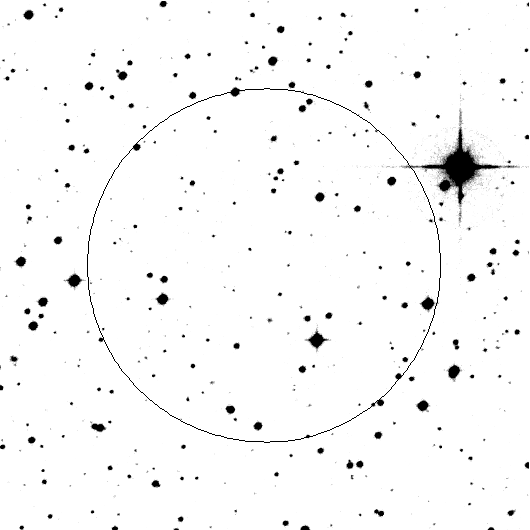
TITLE: GCN/SWIFT NOTICE
NOTICE_DATE: Tue 12 Feb 08 17:36:51 UT
NOTICE_TYPE: Swift-XRT Position
TRIGGER_NUM: 303105, Seg_Num: 0
GRB_RA: 231.1466d {+15h 24m 35.1s} (J2000),
231.2654d {+15h 25m 03.6s} (current),
230.4161d {+15h 21m 39.8s} (1950)
GRB_DEC: -22.7410d {-22d 44' 27.5"} (J2000),
-22.7693d {-22d 46' 09.5"} (current),
-22.5650d {-22d 33' 53.8"} (1950)
GRB_ERROR: 4.7 [arcsec radius, statistical plus systematic, 90% containment]
GRB_INTEN: 6.93e-09 [erg/cm2/sec]
GRB_SIGNIF: 14.42 [sigma]
IMG_START_DATE: 14508 TJD; 43 DOY; 08/02/12
IMG_START_TIME: 63379.93 SOD {17:36:19.93} UT, 106.5 [sec] since BAT Trigger Time
TAM[0-3]: 327.63 237.24 261.32 243.36
AMPLIFIER: 2
WAVEFORM: 134
SUN_POSTN: 325.71d {+21h 42m 50s} -13.73d {-13d 43' 33"}
SUN_DIST: 88.71 [deg] Sun_angle= 6.3 [hr] (West of Sun)
MOON_POSTN: 30.72d {+02h 02m 54s} +17.67d {+17d 40' 17"}
MOON_DIST: 160.08 [deg]
MOON_ILLUM: 34 [%]
GAL_COORDS: 343.22, 27.90 [deg] galactic lon,lat of the burst
ECL_COORDS: 234.55, -3.96 [deg] ecliptic lon,lat of the burst
COMMENTS: SWIFT-XRT Coordinates.
COMMENTS: The object found at this position is either a very bright burst or a cosmic ray hit.
COMMENTS: Examine the XRT Image to differentiate (CRs are much more compact); see examples at:
COMMENTS: http://www.swift.psu.edu/xrt/XRT_Postage_Stamp_Image_Photo_Gallery.htm .
TITLE: GCN/SWIFT NOTICE
NOTICE_DATE: Tue 12 Feb 08 17:37:01 UT
NOTICE_TYPE: Swift-XRT Image
TRIGGER_NUM: 303105, Seg_Num: 0
GRB_RA: 231.1466d {+15h 24m 35.1s} (J2000),
231.2654d {+15h 25m 03.6s} (current),
230.4161d {+15h 21m 39.8s} (1950)
GRB_DEC: -22.7410d {-22d 44' 27.5"} (J2000),
-22.7693d {-22d 46' 09.5"} (current),
-22.5650d {-22d 33' 53.8"} (1950)
GRB_ERROR: 4.7 [arcsec, radius, statistical plus systematic]
GRB_INTEN: 208 [cnts]
IMG_START_DATE: 14508 TJD; 43 DOY; 08/02/12
IMG_START_TIME: 63379.93 SOD {17:36:19.93} UT, 106.5 [sec] since BAT Trigger Time
CENTROID_X: 269.10, raw= 269 [pixels]
CENTROID_Y: 338.61, raw= 339 [pixels]
ROLL: 104.43 [deg]
GAIN: 2
MODE: 3, Long Image mode
WAVEFORM: 134
EXPO_TIME: 2.50 [sec]
GRB_POS_XRT_Y: 95.73
GRB_POS_XRT_Z: -78.24
IMAGE_URL: sw00303105000msxps_rw.img
SUN_POSTN: 325.71d {+21h 42m 50s} -13.73d {-13d 43' 33"}
SUN_DIST: 88.71 [deg] Sun_angle= 6.3 [hr] (West of Sun)
MOON_POSTN: 30.73d {+02h 02m 54s} +17.67d {+17d 40' 19"}
MOON_DIST: 160.08 [deg]
MOON_ILLUM: 34 [%]
GAL_COORDS: 343.22, 27.90 [deg] galactic lon,lat of the burst
ECL_COORDS: 234.55, -3.96 [deg] ecliptic lon,lat of the burst
COMMENTS: SWIFT-XRT Image.

TITLE: GCN/SWIFT NOTICE
NOTICE_DATE: Tue 12 Feb 08 17:37:06 UT
NOTICE_TYPE: Swift-XRT Processed Image
TRIGGER_NUM: 303105, Seg_Num: 0
GRB_RA: 231.1466d {+15h 24m 35.1s} (J2000),
231.2654d {+15h 25m 03.6s} (current),
230.4161d {+15h 21m 39.8s} (1950)
GRB_DEC: -22.7410d {-22d 44' 27.5"} (J2000),
-22.7693d {-22d 46' 09.5"} (current),
-22.5650d {-22d 33' 53.8"} (1950)
GRB_ERROR: 4.7 [arcsec, radius, statistical plus systematic]
GRB_INTEN: 208 [cnts]
IMG_START_DATE: 14508 TJD; 43 DOY; 08/02/12
IMG_START_TIME: 63379.93 SOD {17:36:19.93} UT, 106.5 [sec] since BAT Trigger Time
CENTROID_X: 269.10, raw= 269 [pixels]
CENTROID_Y: 338.61, raw= 339 [pixels]
ROLL: 104.43 [deg]
GAIN: 2
MODE: 3, Long Image mode
WAVEFORM: 134
EXPO_TIME: 2.50 [sec]
GRB_POS_XRT_Y: 95.73
GRB_POS_XRT_Z: -78.24
IMAGE_URL: sw00303105000msxps_rw.img
SUN_POSTN: 325.71d {+21h 42m 50s} -13.73d {-13d 43' 33"}
SUN_DIST: 88.71 [deg] Sun_angle= 6.3 [hr] (West of Sun)
MOON_POSTN: 30.73d {+02h 02m 54s} +17.67d {+17d 40' 20"}
MOON_DIST: 160.08 [deg]
MOON_ILLUM: 34 [%]
GAL_COORDS: 343.22, 27.90 [deg] galactic lon,lat of the burst
ECL_COORDS: 234.55, -3.96 [deg] ecliptic lon,lat of the burst
COMMENTS: SWIFT-XRT Processed Image.

RA = 15:24:35.19 DEC= -22:44:29.0This indicates that the burst is likely at low redshift."
TITLE: GCN/SWIFT NOTICE
NOTICE_DATE: Tue 12 Feb 08 17:50:54 UT
NOTICE_TYPE: Swift-UVOT Source List
TRIGGER_NUM: 303105, Seg_Num: 0
POINT_RA: 231.119d {+15h 24m 28s} (J2000)
POINT_DEC: -22.758d {-22d 45' 29"} (J2000)
POINT_ROLL: 104.433d
IMG_START_DATE: 14508 TJD; 43 DOY; 08/02/12
IMG_START_TIME: 63382.69 SOD {17:36:22.69} UT, 109.2 [sec] since BAT Trigger Time
FILTER: 3, V
BKG_MEAN: 4.566
N_STARS: 94
X_OFFSET: 526 [pixels]
Y_OFFSET: 325 [pixels]
X_MAX: 1485 [pixels]
Y_MAX: 1284 [pixels]
DET_THRESH: 18
PHOTO_THRESH: 10
SL_URL: sw00303105000msufc0109.fits
SUN_POSTN: 325.72d {+21h 42m 52s} -13.72d {-13d 43' 21"}
SUN_DIST: 88.74 [deg] Sun_angle= 6.3 [hr] (West of Sun)
MOON_POSTN: 30.86d {+02h 03m 26s} +17.72d {+17d 43' 24"}
MOON_DIST: 160.24 [deg]
MOON_ILLUM: 34 [%]
GAL_COORDS: 343.18, 27.91 [deg] galactic lon,lat of the pointing direction
ECL_COORDS: 234.53, -3.98 [deg] ecliptic lon,lat of the pointing direction
COMMENTS: SWIFT-UVOT Source List.
TITLE: GCN/SWIFT NOTICE
NOTICE_DATE: Tue 12 Feb 08 17:51:25 UT
NOTICE_TYPE: Swift-UVOT Processed Source List
TRIGGER_NUM: 303105, Seg_Num: 0
POINT_RA: 231.119d {+15h 24m 28s} (J2000)
POINT_DEC: -22.758d {-22d 45' 29"} (J2000)
POINT_ROLL: 104.433d
IMG_START_DATE: 14508 TJD; 43 DOY; 08/02/12
IMG_START_TIME: 63382.69 SOD {17:36:22.69} UT, 109.2 [sec] since BAT Trigger Time
FILTER: 3, V
BKG_MEAN: 4.566
N_STARS: 94
X_OFFSET: 526 [pixels]
Y_OFFSET: 325 [pixels]
X_MAX: 1485 [pixels]
Y_MAX: 1284 [pixels]
DET_THRESH: 18
PHOTO_THRESH: 10
SL_URL: sw00303105000msufc0109.fits
SUN_POSTN: 325.72d {+21h 42m 52s} -13.72d {-13d 43' 21"}
SUN_DIST: 88.74 [deg] Sun_angle= 6.3 [hr] (West of Sun)
MOON_POSTN: 30.86d {+02h 03m 27s} +17.73d {+17d 43' 31"}
MOON_DIST: 160.25 [deg]
MOON_ILLUM: 34 [%]
GAL_COORDS: 343.18, 27.91 [deg] galactic lon,lat of the pointing direction
ECL_COORDS: 234.53, -3.98 [deg] ecliptic lon,lat of the pointing direction
COMMENTS: SWIFT-UVOT Processed Source List.
COMMENTS: All 4 attachments are included.
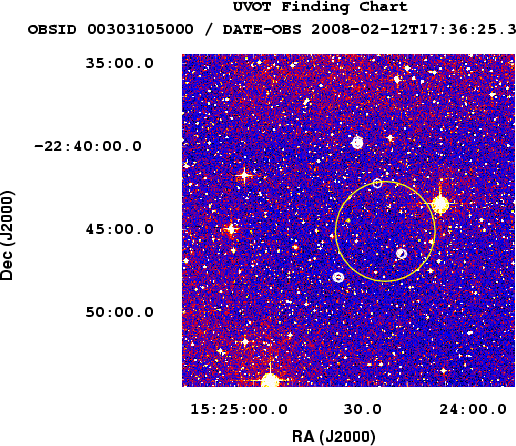
TITLE: GCN/SWIFT NOTICE
NOTICE_DATE: Tue 12 Feb 08 17:52:20 UT
NOTICE_TYPE: Swift-UVOT Image
TRIGGER_NUM: 303105, Seg_Num: 0
POINT_RA: 231.119d {+15h 24m 28s} (J2000)
POINT_DEC: -22.758d {-22d 45' 29"} (J2000)
ROLL: 104.433d
IMG_START_DATE: 14508 TJD; 43 DOY; 08/02/12
IMG_START_TIME: 63382.69 SOD {17:36:22.69} UT, 109.2 [sec] since BAT Trigger Time
FILTER: 3, V
EXPOSURE_ID: 224530585
X_OFFSET: 846 [pixels]
Y_OFFSET: 645 [pixels]
WIDTH: 160 [pixels]
HEIGHT: 160 [pixels]
X_GRB_POS: 1006
Y_GRB_POS: 805
BINNING_INDEX: 1
IM_URL: sw00303105000msuni0109.fits
SUN_POSTN: 325.72d {+21h 42m 52s} -13.72d {-13d 43' 20"}
SUN_DIST: 88.75 [deg] Sun_angle= 6.3 [hr] (West of Sun)
MOON_POSTN: 30.87d {+02h 03m 29s} +17.73d {+17d 43' 43"}
MOON_DIST: 160.26 [deg]
MOON_ILLUM: 34 [%]
GAL_COORDS: 343.18, 27.91 [deg] galactic lon,lat of the pointing direction
ECL_COORDS: 234.53, -3.98 [deg] ecliptic lon,lat of the pointing direction
COMMENTS: SWIFT-UVOT Image.
COMMENTS: The GRB Position came from the XRT Position Command.
COMMENTS: The image has 2x2 binning (compression).
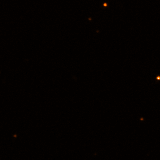
TITLE: GCN/SWIFT NOTICE
NOTICE_DATE: Tue 12 Feb 08 17:52:43 UT
NOTICE_TYPE: Swift-UVOT Processed Image
TRIGGER_NUM: 303105, Seg_Num: 0
POINT_RA: 231.119d {+15h 24m 28s} (J2000)
POINT_DEC: -22.758d {-22d 45' 29"} (J2000)
ROLL: 104.433d
IMG_START_DATE: 14508 TJD; 43 DOY; 08/02/12
IMG_START_TIME: 63382.69 SOD {17:36:22.69} UT, 109.2 [sec] since BAT Trigger Time
FILTER: 3, V
EXPOSURE_ID: 224530585
X_OFFSET: 846 [pixels]
Y_OFFSET: 645 [pixels]
WIDTH: 160 [pixels]
HEIGHT: 160 [pixels]
X_GRB_POS: 1006
Y_GRB_POS: 805
BINNING_INDEX: 1
IM_URL: sw00303105000msuni0109.fits
SUN_POSTN: 325.72d {+21h 42m 53s} -13.72d {-13d 43' 20"}
SUN_DIST: 88.75 [deg] Sun_angle= 6.3 [hr] (West of Sun)
MOON_POSTN: 30.88d {+02h 03m 30s} +17.73d {+17d 43' 48"}
MOON_DIST: 160.26 [deg]
MOON_ILLUM: 34 [%]
GAL_COORDS: 343.18, 27.91 [deg] galactic lon,lat of the pointing direction
ECL_COORDS: 234.53, -3.98 [deg] ecliptic lon,lat of the pointing direction
COMMENTS: SWIFT-UVOT Processed Image.
COMMENTS: The GRB Position came from the XRT Position Command.
COMMENTS: The image has 2x2 binning (compression).
COMMENTS: If you have elected to receive attachments:
COMMENTS: The uvot_sources_image.fits.gz file does not exist; skipping the attachment.
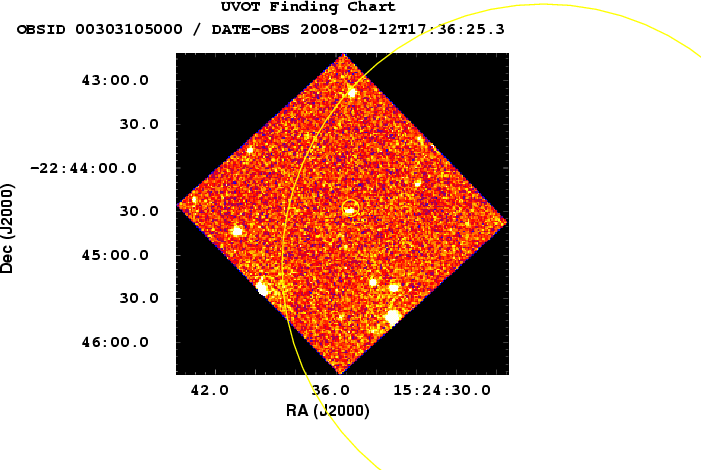
RA(J2000) = 15h 24m 26s Dec(J2000) = -22d 45' 06"with an uncertainty of 3 arcmin (radius, 90% containment, including systematic uncertainty). The BAT light curve showed a single peak with a duration of about 20 sec. The peak count rate was ~1000 counts/sec (15-350 keV), at ~0 sec after the trigger. There may be a precursor at T-60 sec.
RA(J2000) = 15h 24m 35.1s Dec(J2000) = -22d 44' 27.5"with an uncertainty of 4.7 arcseconds (radius, 90% containment). This location is 137 arcseconds from the BAT on-board position, within the BAT error circle. The initial flux in the 2.5s image was 6.9e-09 erg/cm2/s (0.2-10 keV).
RA(J2000) = 15 24 35.24 Dec(J2000) = -22 44 31.0with an estimated uncertainty of 3.6 arcsec. This is 3.7 arcsec from the onboard XRT position (GCN Circ. 7296).
RA (J2000): 15h 24m 35.40s Dec (J2000): -22d 44' 29.5"with an uncertainty of 2.0 arcsec (radius, 90% confidence).
R.A. = 15:24:35.49 Dec. = -22:44:29.0with an uncertainty of 0.3". This position lies about 3.2" (East direction) far from the position of the DSS galaxy (Berger, GCN 7294). This object could thus be the NIR afterglow of GRB 080212. The 3sigma upper limit of our image is H > 15.7 (calibrated against the 2MASS catalog).
RA (2000.0) = 15:24:35.4 Decl (2000.0) = -22:44:30At 6:36 UT we measure i'=22.6 mag. No statement about variability can be made at this stage. GROND observations are continuing.
RA = 15:24:35.4 DEC = -22:44:30 (J2000)This object is consistent with the positions reoprted in GCNs 7302 and 7303."
mid-UT exp-T g' Rc Ic --------------------------------------------------------- 17:42:47 10min 19.46+-0.26 17.77+-0.15 17.98+-0.22 18:00:27 22min > 21.0 18.77+-0.14 18.91+-0.21 18:19:08 52min > 21.0 19.88+-0.10 > 20.5 18:58:37 113min > 21.0 > 20.5 > 20.5 ---------------------------------------------------------
RA(J2000) = 15h 24m 34.8s Dec(J2000) = -22d 44' 19"with an uncertainty of 1.5 arcmin, (radius, sys+stat, 90% containment). The partial coding was 35%.
R.A. =3D 15:24:35.42 Dec. =3D -22:44:28.8with an uncertainty of 0.3" (the REM pixel size is 1.2"/pixel) .
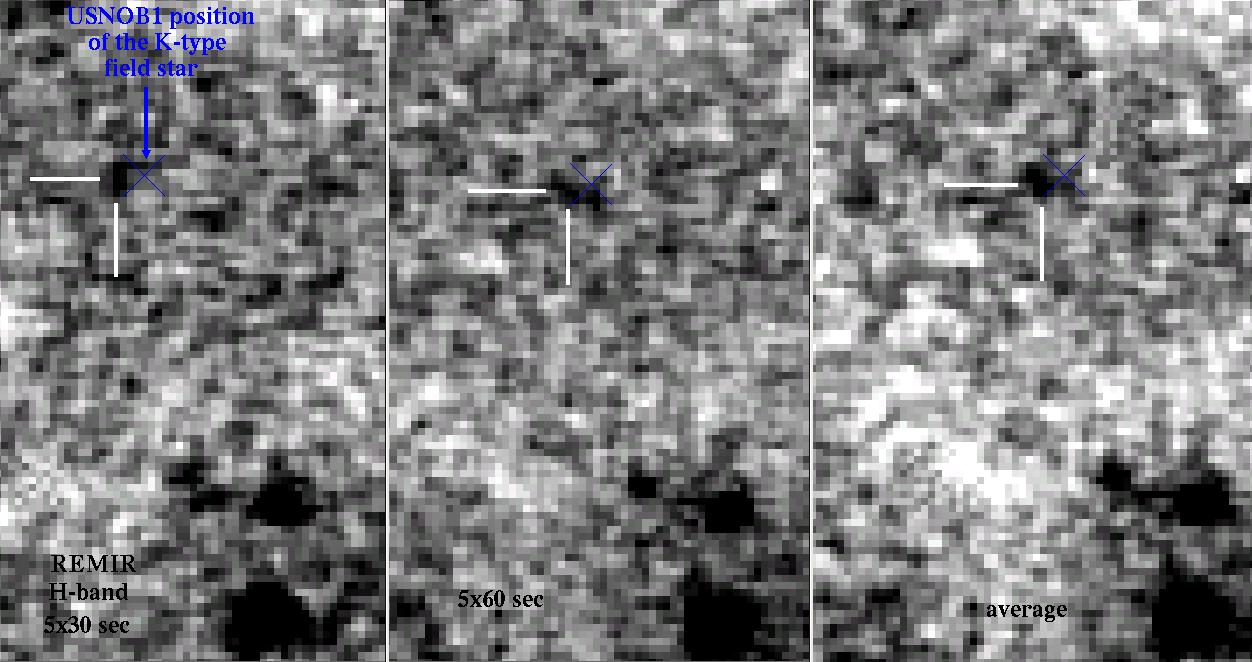
UT Integration time J band magnitude+/-error 13.97 1080s 16.8+/-0.1